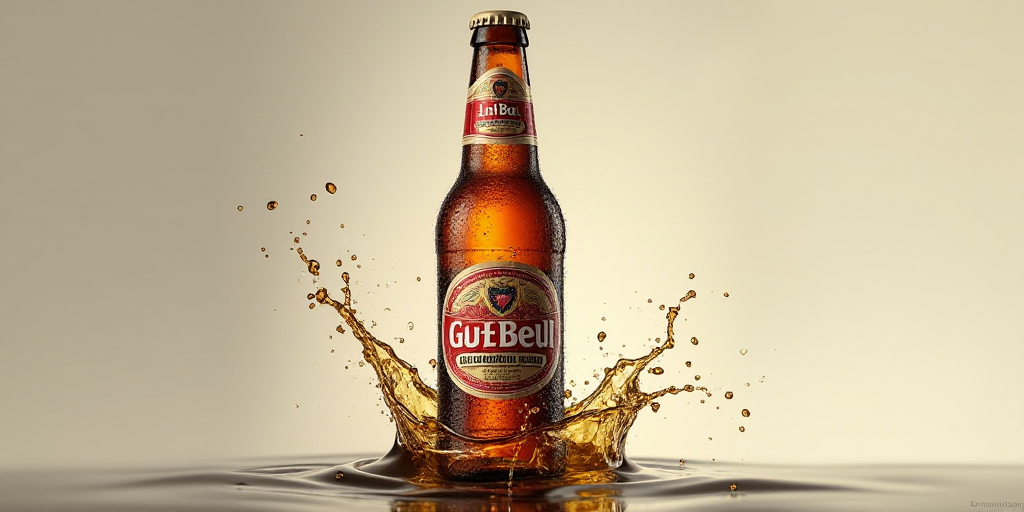Introduction to the Non-Alcoholic Beer Segment
The non-alcoholic beer market in Mexico is emerging as a strategic segment within the country’s brewing industry. Although it currently accounts for only 0.6% of the national beer market, experts predict that this segment has the potential to grow at least tenfold in the coming years, mirroring trends observed in developed countries.
Growth and Consumer Demographics
According to Felipe Ambra, the Vice President of Marketing at Grupo Modelo, “When we look at developed countries, we know that non-alcoholic beer is an industry with a 6% to 10% market share. There’s an opportunity for this industry to expand at least tenfold in the Mexican market.”
While the average annual growth of the Mexican brewing industry is 3%, the non-alcoholic beer segment has seen an average growth of 30% annually between 2019 and 2024. Currently, 50 out of every 100 adult Mexican beer consumers choose the alcohol-free version, with 70% of these consumers being traditional beer drinkers and 30% being new consumers embracing a more conscious consumption trend.
Overcoming Misconceptions
Ambra believes that for non-alcoholic beer to take off and become a significant indicator of liters in the Mexican industry, certain myths need to be debunked. These include the misconceptions that non-alcoholic beer “doesn’t taste like beer” or is “only for people with health restrictions.”
Grupo Modelo has been working on developing a non-alcoholic beer line, Modelo 0%, which preserves the traditional sensory profile and flavor while avoiding alcohol production. They’ve achieved this using “smart yeast” that completes the fermentation cycle with minimal alcohol (0.4%).
Grupo Modelo’s Commitment to Moderation and Well-being
Raúl Escalante, the Vice President of Corporate Affairs at Grupo Modelo, explained that the company is committed to developing non-alcoholic beer as part of their support for “moderation and well-being.”
“Our goal is clear: to ensure our consumers always have a positive experience, and for our products to be part of every special moment responsibly and safely,” Escalante stated.
This innovation complements other initiatives and campaigns aimed at reducing harmful alcohol consumption, focusing on “zero alcohol consumption among minors, moderation in drinking, and road safety.”
Joining the “Hecho en México” Program
Grupo Modelo has joined the relaunch of the “Hecho en México” (Made in Mexico) initiative by the federal government to strengthen local procurement and promote national development, aiming for Mexico to become one of the world’s top 10 most important economies.
More than 70% of the group’s inputs are currently sourced domestically, and they aim to increase this percentage. In April, Grupo Modelo announced a $3.6 billion investment for the 2025-2027 period to expand and modernize their Mexican breweries.
With over a century of experience in Mexico’s agroindustrial brewing sector, Grupo Modelo contributes more than 1.6% to Mexico’s Gross Domestic Product (GDP).
Key Questions and Answers
- What is the current market share of non-alcoholic beer in Mexico? Non-alcoholic beer accounts for only 0.6% of the Mexican beer market.
- What is the average annual growth of the non-alcoholic beer segment in Mexico? The non-alcoholic beer segment has seen an average growth of 30% annually between 2019 and 2024.
- What percentage of traditional beer consumers also buy the alcohol-free version? 70% of traditional beer consumers also purchase the alcohol-free version.
- What are Grupo Modelo’s plans for the non-alcoholic beer market? Grupo Modelo aims to develop a non-alcoholic beer line, Modelo 0%, and support moderation and well-being through various initiatives.
- How is Grupo Modelo contributing to Mexico’s economy? Grupo Modelo contributes more than 1.6% to Mexico’s Gross Domestic Product (GDP) and has committed to sourcing more than 70% of its inputs domestically.






